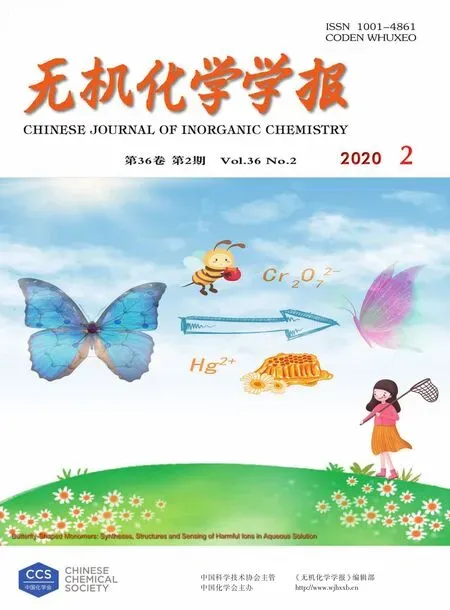手性双核Eu(Ⅲ)配合物的合成及光谱性质
王丽丽 杨倩莹 韩立志 张小朋*, 陈星晗 史载锋
(1海南师范大学化学与化工学院,海南省水环境污染治理与资源化重点实验室,海口 571158)
(2南京林业大学化学工程学院,江苏省生物质绿色燃料与化学品重点实验室,南京 210037)
Circularly polarized luminescence (CPL)has attracted increasing attention over the past few years due to its wide applications in 3D-displays,enantioselective sensing and bioresponsive imaging[1-4].So far,CPL-active materials have been dominated by chiral Ln(Ⅲ) complexes[5-9].Due to the magnetic-dipole allowed transition,those emissive Ln(Ⅲ)systems generally have large luminescence dissymmetry factors glumof CPL signal(glum=2ΔI/I=2(IL-IR)/(IL+IR),where ILand IRrefer,respectively,to the intensity of left and right circularly polarized emissions).Especially,extraordinary circularly polarized luminescence activity has been always observed in those highly emissive Eu(Ⅲ)complexes with the largest glumbeing 1.38[10],and Eu(Ⅲ)-based OLEDs (organic light-emitting diodes)have been fabricated showing remarkable circularly polarized electroluminescence[11-12].
Pinene are accessible natural products with rigid lipophilic groups,and can be facilely introduced in pyridine ligands through Krhnke-type strategy[13-14].Due to the defined carbon stereocenters and steric bulk fragments derived from pinene sources,the complexes modified with these optically active units are endowed with preferential configurations or significant distortions,leading to potential application in enantioselective synthesis and stereoselective recognition[15-17].Through stereoselective deprotonation of(+)-5,6-pinene-2,2′-bipyridine by lithium diisopropylamide,a carboxylic group could be appended to the pinene-fused bipyridine,and trinuclear enantiopure helical architectures have been isolated by self-assembling of the above chiral bipyridine carboxylate with Ln(Ⅲ)ions,giving rise to interesting CPL properties[18-19].
We have previously prepared a series of chiral Ln(Ⅲ)complexes functionalized with pinene-derivatized bipyridine ligands,and investigated their luminescent,magnetic,ferroelectric and chiroptical properties[20-23].In this work,we design and synthesis a new chiral carboxylic-containing 2,2′-bipyridine((+)-L and(-)-L).Utilizing the above chiral ligands,a couple of chiral dinuclear Eu(Ⅲ) complexes,[Eu2((+)-L)2(TTA)2(C2H5OH)2]((+)-1)and [Eu2((-)-L)2(TTA)2(C2H5OH)2]((-)-1)were obtained(Fig.1).The structure of(+)-1 was confirmed by the single-crystal X-ray diffraction.The solution of(+)-1 is emissive and shows distinct CPL signals.Due to polydentate and asymmetric character of(+)-L and(-)-L,they can be used as chiral building blocks for the synthesis of novel chiral architectures.
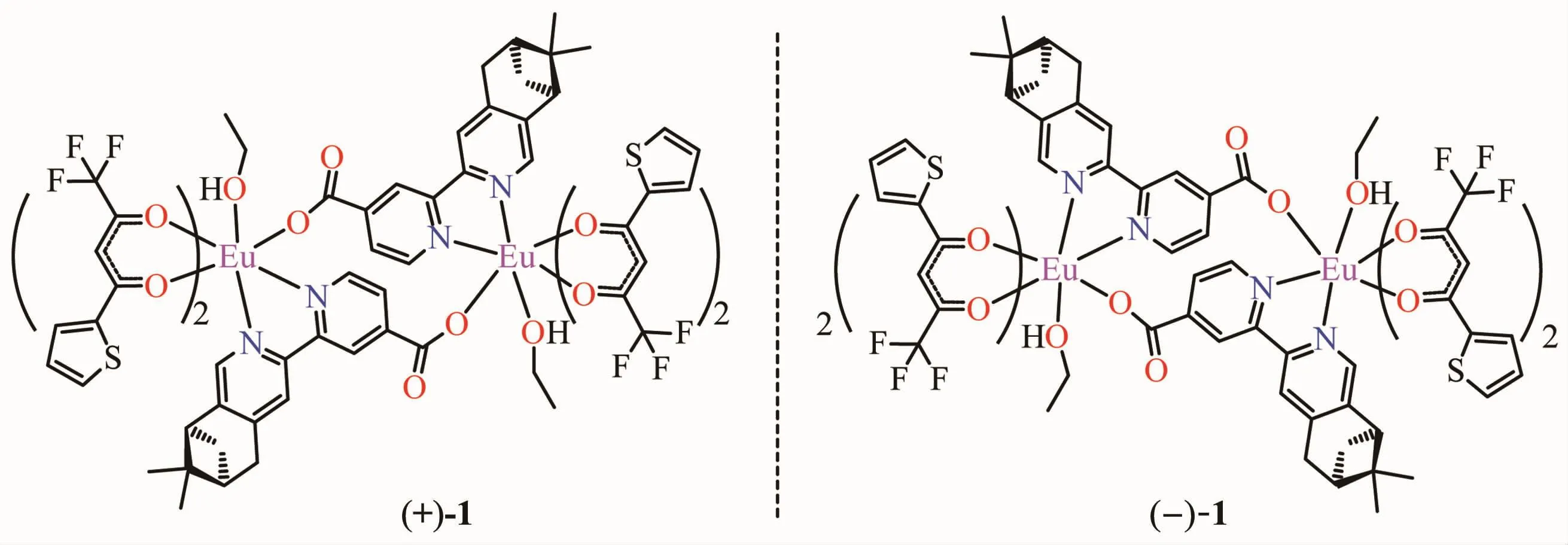
Fig.1 Chemical structures of complexes(+)-1 and(-)-1
1 Experimental
1.1 Reagents and instrumentals
All reagents were purchased from commercial suppliers and used as received without further purification.Mass spectra were acquired on an LCQ Fleet ESI Mass Spectrometer.The NMR spectra were obtained on Bruker DRX-500 spectrometer.Chemical shifts are referenced to TMS.UV-Vis spectra were measured on a UV-3600 spectrophotometer.Elemental analysis was performed on a Perkin-Elmer 240C analyzer.Powder XRD patterns were recorded on a Shimadzu XD-3A X-ray diffractometer at 40 kV,30 mA using a Cu Kα radiation(λ=0.154 06 nm)in 2θ range of 5°~50°.Photoluminescence(PL)spectra were measured by Hitachi F-4600 PL spectrophotometer(λex=352 nm).The electronic circular dichroism(ECD)spectra in CH2Cl2solution were recorded on a Jasco J-810 spectropolarimeter(10 mm quartz cell,concentration:10 μmol·L-1).The CPL spectra were recorded using a circularly polarizer on Jasco CPL-300 spectrophotometer at a scan rate of 100 nm·min-1and 1 nm resolution at room temperature (10 mm quartz cell,concentration:0.1 mmol·L-1).
1.2 Synthesis
Our synthetic route to chiral ligand (+)-L is outlined in the Scheme 1.Acetylation of the methyl isonicotinate provided methyl 2-acetylisonicotinate in near quantitative yield through a modification of a reported procedure[24].The preparation from methyl 2-acetylisonicotinate to ester-containing 2,2′-bipyridine was carried out through the conventional Krhnke strategy[13-14].Finally,the ester was converted in 95%yield to our desired chiral ligand (+)-L in the NaOH/H2O/THF system.The complex(+)-1 was obtained through the reaction of [Eu(TTA)3]·2H2O (TTA=2-thenoyltrifluoroacetone)and(+)-L in 1∶1 ratio.Compounds(-)-L and(-)-1 were obtained with the same procedures as for(+)-L and(+)-1.

Scheme 1 Synthesis route of(+)-L
1.2.1 Synthesis of methyl 2-acetylisonicotinate(compound A)
Methyl isonicotinate(13.7 g,100 mmol),acetaldehyde(50 mL)and FeSO4·7H2O (0.58 g,2 mmol)were dissolved in MeCN(200 mL).TFA(11.4 g,100 mmol)was added dropwise during 10 min,followed by 70%t-BuOOH(20 g).The mixture was stirred at room temperature for 1 h and then heated under reflux for 4 h.The solvent was removed under reduced pressure,and the residue was taken up in saturated aqueous Na2CO3(150 mL)and extracted with CH2Cl2(3×100 mL).The organic layers were combined and washed twice with water and once with brine,dried over anhydrous Na2SO4.Evaporation of the solvent gave the crude product which was purified by flash column chromatography to yield A as a white solid (14.7 g,82%).MS(EI)(m/z): [M]+Calcd.for C9H10NO3,180.0;Found,180.2.1H NMR (500 MHz,CDCl3):δ 8.84(d,J=4.5 Hz,1H),8.55(s,1H),8.03(dd,J1=5.0 Hz,J2=1.5 Hz,1H),3.99(s,3H),2.76(s,3H).
1.2.2 Synthesis of 1-(2-(4-(methoxycarbonyl)pyridin-2-yl)-2-oxoethyl)pyridin-1-ium iodide (compound B)
A solution of compound A (8.95 g,50 mmol)in dry pyridine (50 mL)was stirred at 115℃.Then,a solution of iodine (12.7 g,50 mmol)in dry pyridine(30 mL)was added dropwise under nitrogen atmosphere during 1 h.The resulting mixture was stirred at same temperature for another 5 h.After cooling to room temperature,the precipitate was collected by filtration and washed with ether,dried under vacuum.The crude product of B was used in the next step without further purification.
1.2.3 Synthesis of ester-containing 2,2′-bipyridine(compound C)
A mixture of compound B (3.84 g,10 mmol),ammonium acetate(1.74 g,20 mmol)and(+)-mytenal(1.65 g,11 mmol)in ethanol(50 mL)was stirred at reflux for 12 h.After removal of the ethanol under reduced pressure,the residue was treated with 60 mL of water,extracted with CH2Cl2(50 mL×3).The organic layers were combined and washed twice with water and once with brine,dried over anhydrous Na2SO4.Evaporation of the solvent gave the crude product which was purified by flash column chromatography to yield C as a yellow solid(1.85 g,60%).MS(EI)(m/z):[M]+Calcd.for C19H21N2O2,309.2;Found,309.5.1H NMR(500 MHz,CDCl3):δ 8.91(s,1H),8.81(d,J=5.0 Hz,1H),8.26(s,1H),8.22(s,1H),7.85(d,J=5.0 Hz,1H),4.00(s,3H),3.08(s,2H),2.91(t,J=5.5Hz,1H),2.72~2.76(m,1H),2.35(m,1H),1.45(s,3H),1.27(d,J=10.0 Hz,1H),0.68(s,3H).
1.2.4 Synthesis of carboxylic-containing 2,2′-bipyridine(compound(+)-L)
To a stirred THF solution (20 mL)of compound C(1.85 g,6 mmol)was added 2 mol·L-1NaOH(10 mL).The resulting mixture was stirred at room temperature for 12 h.Most of THF was removed under reduced pressure,and the residue was treated with water(20 mL)and neutralized by 2 mol·L-1HCl at 0 ℃.The precipitate was collected by filtration and washed with water,dried under vacuum to afford the acid (+)-L as colorless powder(1.67 g,95%).MS(EI)(m/z): [M]-Calcd.for C18H17N2O2,293.1;Found,293.2.1H NMR(500 MHz,DMSO):δ 8.84(d,J=5.0 Hz,1H),8.79(s,1H),8.28(s,1H),8.24(s,1H),7.83(d,J=4.5 Hz,1H),3.07(d,J=12.0 Hz,2H),2.92(t,J=5.5Hz,1H),2.70~2.74(m,1H),2.31(m,1H),1.41(s,3H),1.17(d,J=9.5 Hz,1H),0.62(s,3H).
1.2.5 Synthesis of dinuclear Eu(Ⅲ)complexes(compound(+)-1)
Ligand(+)-L(294 mg,1 mmol)was added portionwise to a stirred solution of Eu(TTA)3·2H2O(851 mg,1 mmol)in EtOH solution (50 mL).The resulting mixture was stirred at room temperature for 24 h.The precipitate was collected by filtration to yield the desired product(+)-1(700 mg,75%)as a colorless powder.The crystals of(+)-1 was isolated by the slow recrystallization in EtOH/CH2Cl2solution(1∶2,V/V)at 273 K.Elemental analysis(%)calculated for compound(+)-1 (C72H62Eu2F12N4O14S4,%):C,46.31;H,3.35;N,3.00.Found(%):C,46.28;H,3.33;N,2.97.
1.3 X-ray structure determination
Single-crystal X-ray diffraction measurements for(+)-1 were carried out on a Bruker SMART APEX CCD based on diffractometer operating at room temperature.The data were collected with graphite monochromatized Mo Kα radiation(λ=0.071 073 nm)operating at 50 kV and 30 mA,using ω-2θ scan mode.The data reduction was made with the Bruker SAINT package[25].Absorption corrections were performed using the SADABS program[26].The structures were solved by direct methods and refined on F2by fullmatrix least-squares using SHELXL-97 with anisotropic displacement parameters for all non-hydrogen atoms in all two structures.Hydrogen atoms bonded to the carbon atoms were placed in calculated positions and refined as riding mode,with dC-H=0.093 nm(methane)or 0.096 nm(methyl)and Uiso(H)=1.2Ueq(Cmethane)or Uiso(H)=1.5Ueq(Cmethyl).The water hydrogen atoms were located in the difference Fourier maps and refined with an O-H distance restraint (0.085(1)nm)and Uiso(H)=1.5Ueq(O).All computations were carried out using the SHELXTL-97 program package[27].
CCDC:1916754,(+)-1.
2 Results and discussion
2.1 Crystal structure of(+)-1
The crystals of (+)-1 suitable for single X-ray diffraction analysis was isolated by the slow recrystallization in EtOH/CH2Cl2solution(1∶2,V/V)at 273 K.Compound (+)-1 crystallizes in P21space group of monoclinic system and is present as a dinuclear neutral form (Table 1).One complex molecule is involved in the asymmetrical unit of(+)-1.As shown in Fig.2,each octa-coordinated Eu(Ⅲ)ion is bound by four oxygen atoms of two β-diketonate anions,one oxygen atom of coordinated ethanol and two nitrogen atoms of(+)-L.To complete the eight-coordinateconfiguration,the last coordination site of each Eu(Ⅲ)ion is occupied by one of carboxylate oxygen atoms of the (+)-L ligand,forming a EuO6N2polyhedral structure.Therefore,two Eu(Ⅲ)ions are bridged by two(+)-L ligands and are separated by 0.860 3 nm.
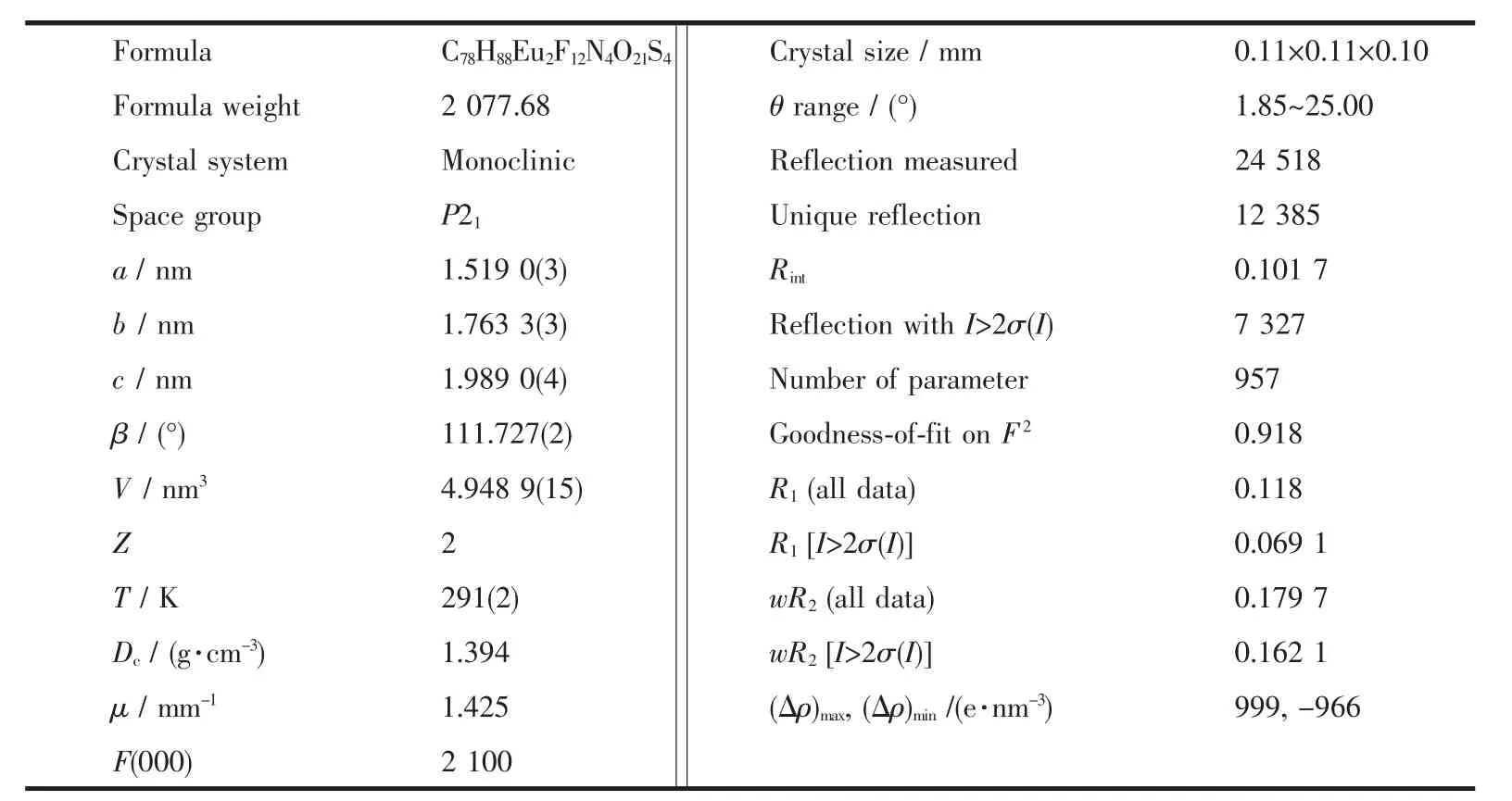
Table 1 Crystallographic data of complex(+)-1
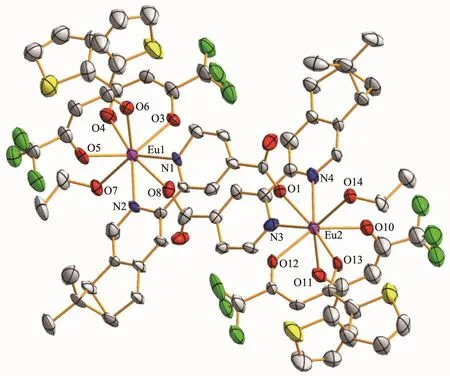
Fig.2 X-ray crystal structure of(+)-1 with 30%ellipsoidal probability

Table 2 Selected bond lengths(nm)and angles(°)for complex(+)-1

Continued Table 2
Selected bond lengths and angles are summarized in Table 2.Similar to those Eu(Ⅲ)complexes reported previously,the Eu-O bond lengths range from 0.231 6(5)to 0.245 3(5)nm,while the Eu-N bond lengths are in a range of 0.255 1(6)~0.262 1(7)nm[18-19].Each Eu(Ⅲ)ion is in a distorted bicapped trigonal prism environment with approximate square planes that the two faces defined as O3-O4-O7-O8 (top plane)and N1-N2-O5-O6 (bottom plane)for the Eu1 atom,and O1-O12-O13-O14(top plane)and N3-N4-O10-O11(bottom plane)for the Eu2 atom(Fig.3).The above planes are creased about the respective diagonals O4-O8 and N2-O6 with angles of 13.998°(0.445)and 6.289°(0.530)for Eu1,and about the respective diagonals O1-O13 and N3-O10 with angles of 14.039°(0.425)and 1.294°(0.571)for Eu2.Thus the type of both Eu(Ⅲ)-based geometries can be best described as a distorted bicapped trigonal prism[28-30].The experimental XRD patterns fit well with the simulated ones from single crystal structure,confirming the phase purity(Fig.4).
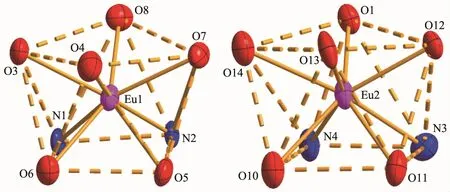
Fig.3 Coordination geometries around the Eu(Ⅲ)ions of(+)-1

Fig.4 Comparison of experimental XRD patterns of(+)-1 with the simulated result from single crystal structure
2.2 Absorption and emission spectra of complexes(+)-1 and(-)-1

Fig.5 UV-Vis(a)and CD spectra(b)of(+)-1 and(-)-1 in CH2Cl2solutions(10 μmol·L-1)
The UV-Vis absorption spectra of enantiomers(+)-1 and (-)-1 were carried out in 10 μmol·L-1CH2Cl2solution(Fig.5).Complexes(+)-1 and(-)-1 showed intense absorption bands in the region of 225~400 nm (ε>104L·mol-1·cm-1),which can be ascribed to characteristic π-π*transitions correlated with the aromatic rings of ligands.Compared to the chiral ligand(+)-L,the π-π*transition of TTA showed a lower energy,indicating the antenna effect of TTA in complexes(+)-1 and(-)-1[28].As a result of the low intensity of f-f transitions,the corresponding absorption of Eu(Ⅲ)ion cannot be distinctly detected in the expected range of 200~400 nm.
Due to the antenna effect of ligands,the energy absorbed in the ultraviolet region can be transferred to the Eu(Ⅲ)ion,leading to the luminescence of the complexes.The solution of(+)-1 emitted bright red luminescence at room temperature.Upon excitation at 352 nm,complex (+)-1 exhibited a characteristic emission of Eu(Ⅲ)ion with four main peaks at 580,594,616 and 654 nm,which can be attributed to the5D0-7Fj(j=0~3)transitions of the Eu(Ⅲ) ion[18,28-29](Fig.6).With respective to other transitions,the emission of5D0-7F2transition with much higher intensity was observed,implying the absence of inversion symmetry of the compound[28],which has been confirmed by the crystal structure of(+)-1(Fig.2).
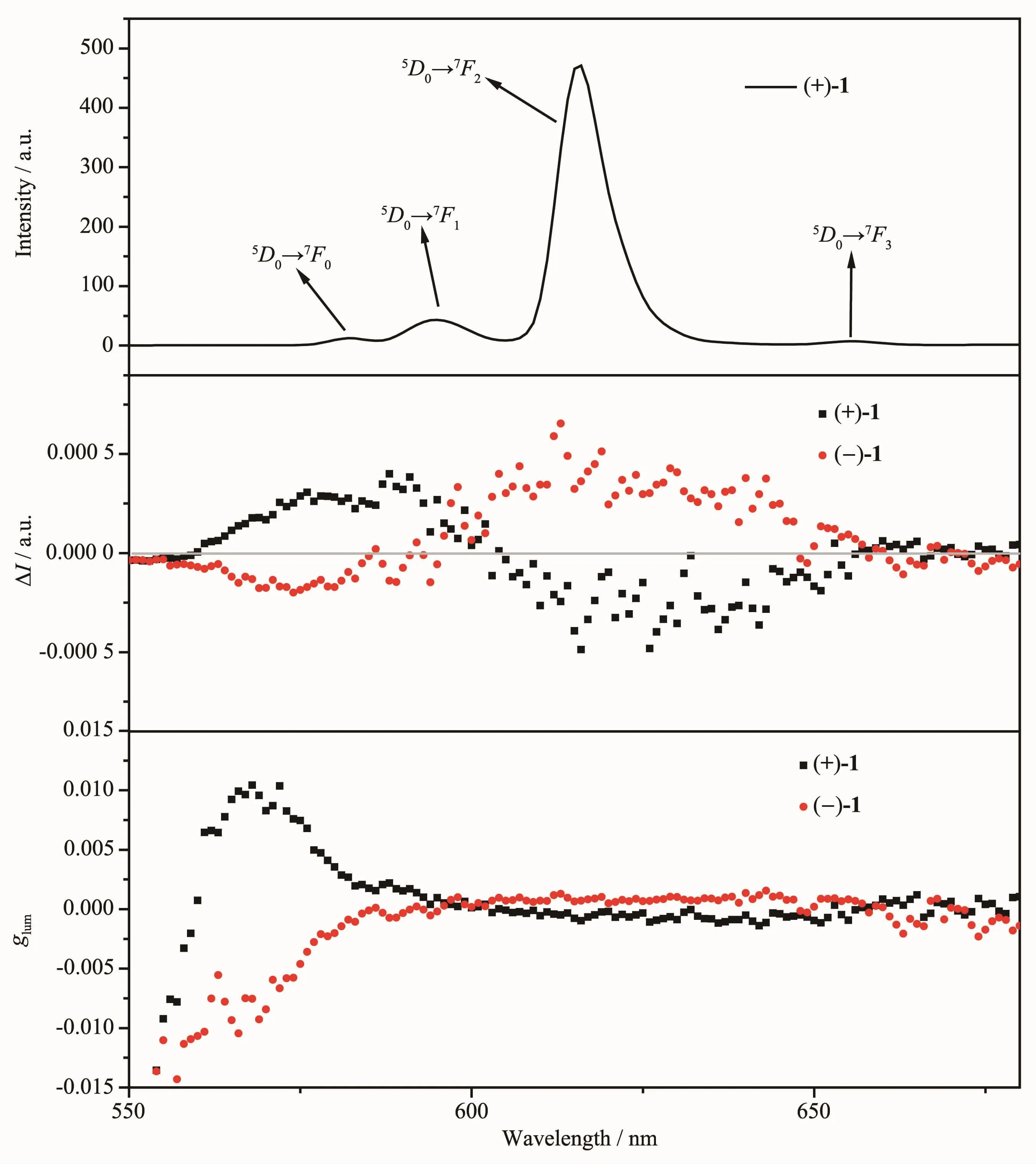
Fig.6 Emission spectrum of(+)-1 in CH2Cl2(0.1 mmol·L-1)at room temperature,λex=352 nm(top);CPL spectra of(+)-1 and(-)-1 in CH2Cl2(0.1 mmol·L-1)at room temperature(middle);glumfactors of(+)-1 and(-)-1(bottom)
2.3 Chiroptical properties of complexes(+)-1 and(-)-1
To verify the chiral environment of the complexes,the measurement of CD and CPL was performed.The UV-Vis spectra of complexes (+)-1 and (-)-1 were identical while the ECD spectra were almost mirrorsymmetric to each other(Fig.5).The ECD spectrum of(+)-1 showed distinct Cotton effects(positive:253 nm;negative:371 nm)in CH2Cl2solution,also a weak Cotton effect could be clearly observed (positive:303 nm).Therefore,a bisignate curve centering around 330 nm was identified,which can be tentatively assigned to the exciton coupling of the π-π*transitions of chiral carboxylic-containing bipyridine ligands[17-19].
The solution of(+)-1 is highly emissive at room temperature,which motivate us to explore the interesting CPL activity in the corresponding excited state.The CPL spectra of (+)-1 and (-)-1 were measured in 0.1 mmol·L-1CH2Cl2solutions,and a measurable and mirror-symmetric CPL activity for(+)-1 and(-)-1 was able to be detected(Fig.6).The CPL associated with5D0→7F1(λem=580 nm)transition and5D0→7F2(λem=616 nm)transition displayed inverse signals.The values of dissymmetry factor(glum)in the excited state of(+)-1 were 5×10-3at λem=580 nm and-1×10-3at λem=616 nm.Because of magnetic-dipole allowed transition5D0→7F1,the emission at λem=580 shows a higher value of glum[17-19].Despite the comparatively low glumin this Eu(Ⅲ)system,it give a reference forpreparing chiral polynuclear complexes with detectable CPL activities through carboxylic-containing bipyridine ligands.
3 Conclusions
In summary,a couple of chiral dinuclear Eu(Ⅲ)complexes(+)-1 and(-)-1 have been prepared through utilizing the chiral carboxylic-containing 2,2′-bipyridine ligands.The structure of (+)-1 was determined by single crystal X-ray crystallography,revealing a distorted bicapped trigonal prism for both Eu(Ⅲ)ions.Since the energy absorbed in the ultraviolet region by ligands can be effectively transferred to the Eu(Ⅲ)ion,complexes(+)-1 and(-)-1 are highly emissive in the CH2Cl2solutions.Therefore,the corresponding CPL activities in the excited state have been investigated,and measurable CPL signals can be observed with glumbeing 5×10-3at λem=580 nm and-1×10-3at λem=616 nm for complex (+)-1.The further preparation and application of CPL-active Eu(Ⅲ)complexes involved of chiral carboxylic-containing 2,2′-bipyridine ligands are underway and will be reported in due course.

